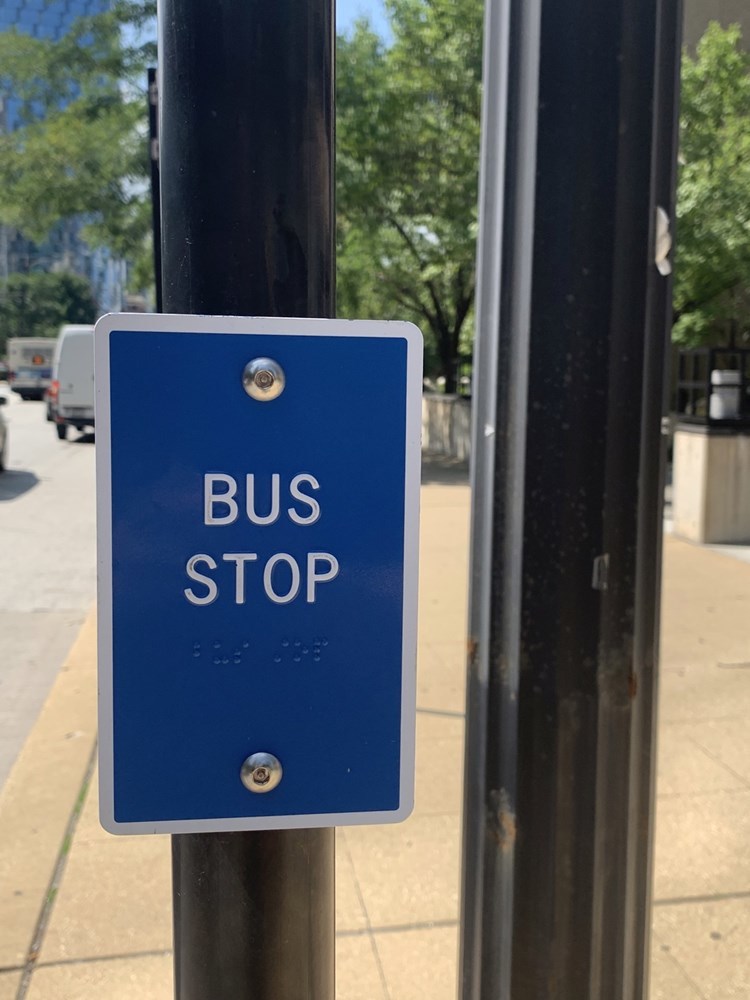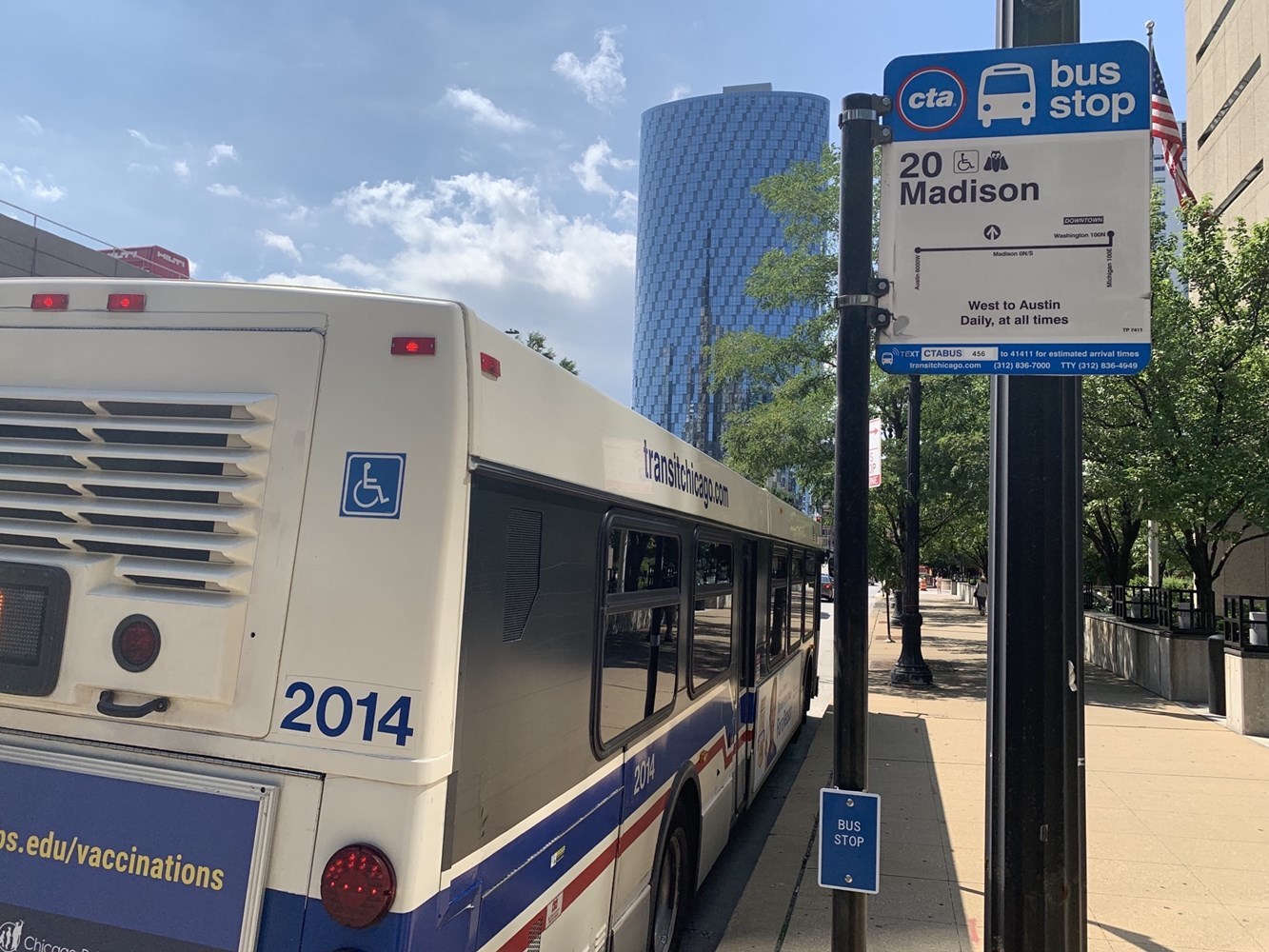CTA to deploy more than 1,300 new tactile signs across 12 routes, the latest step the agency is taking to improve public transportation for people with visual impairments.
As part of ongoing efforts to make public transportation easier to navigate for people with disabilities, the Chicago Transit Authority (CTA) today announced that it has begun the installation of more than 1,300 tactile signs under a pilot designed to make the boarding locations for bus stops easier to identify for riders who are blind or low vision.
The concept for the pilot is based on feedback CTA received from customers who are blind, low vision and DeafBlind. This initiative is the latest measure announced by the CTA since unveiling its “Meeting the Moment Action Plan,” and in support of the guiding pillar to deliver reliable and consistent service for customers.
“As part of our ongoing dialogue with members of the disability community, we learned that many who were blind or low vision, would often avoid taking the bus, opting for paratransit or rail service out of frustration from being unable to confidently locate a bus stop,” said CTA President Dorval R. Carter, Jr. “Our goal with this pilot is to create and test a practical solution to help remove a barrier that so many riders encounter and ensure everyone has convenient access to affordable and reliable public transit services. Chicagoans will continue to hear from us often with progress updates like this pilot as we deliver our Action Plan goals and enhance the CTA system in the coming months.”
The signs, which are 4” X 6.5”, feature the words “BUS STOP” in Braille and raised type face. The tactile signs will be centered on the pole of the existing bus stop, between 48” and 60” from ground level, and positioned in the direction of travel of the approaching bus.

“This solution was created by many stakeholders, including disability community input from riders with disabilities including those who are blind and low vision,” said Mayor’s Office for People with Disabilities (MOPD) Commissioner Rachel Arfa. “We applaud CTA for providing tactile signage for blind and low vision users of our transportation systems.”
Currently, stops along the #20 Madison route features the new tactile bus stop signs, with crews expanding to bus stops along the following 11 routes over the next several months:
- #4 Cottage Grove
- #X4 Cottage Grove Express
- #9 Ashland
- #X9 Ashland Express
- #12 Roosevelt
- #49 Western
- #X49 Western Express
- #63 63rd
- #66 Chicago
- #79 79th
- #157 Streeterville/Taylor

Although these tactile signs are not required by Americans with Disabilities Act, the CTA strives to address transportation barriers experienced by individuals of all abilities. The installation of tactile bus signage at over 1,300 bus stops complements the CTA’s All Station Accessibility Program, a plan to make all 145 rail stations accessible by 2038, and highlights the agency’s commitment to accessibility, as well as finding new and innovative ways to make taking public transit easier and more convenient for everyone.
In preparation for this pilot, the CTA researched best practices from transit agencies across the nation and then used this information to create an initial concept. The initial concept was presented to a focus group with members from the disability community to review preliminary ideas for signage color, material, legibility, sizing, and other criteria for pilot implementation. Feedback from this focus group was used to finalize the signage design.
The pilot program was funded in part by the Section 5310 Enhanced Mobility of Seniors and Individuals with Disabilities Grant, which awarded the CTA with $380,350 for the project.
For more information about CTA’s commitment to accessibility, or to view the All Station Accessibility Program, please visit: https://www.transitchicago.com/accessibility/asap/
###